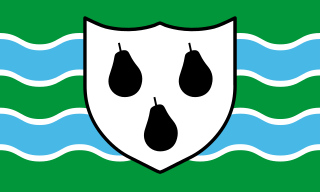Sir James Dalrymple, 1st Baronet was a Scottish writer who served as the Principal Clerk of Session. He was the son of the jurist James Dalrymple, 1st Viscount Stair (1619–1695). He is known as contributing to the debate over the Union between England and Scotland with his Collections Concerning the Scottish History (1705)

The Regius Chair of Civil Law, founded in the 1540s, is one of the oldest of the professorships at the University of Oxford.
Arthur Yeldard (c.1530–1599) was an English clergyman and academic, chosen as the first Fellow and second President of Trinity College, Oxford.
Adam of Barking, was a Benedictine monk and religious poet who left a number of writings including De Serie Sex Ætatum which runs to 15,000 lines of hexameter. He belonged to the abbey of Sherborne in Dorset.
Charles Croke was an English clergyman and Gresham Professor of Rhetoric.
Ælric, perhaps a misspelling of Ælfric or Æthelric, archbishop-elect of Canterbury, was a kinsman of Godwin, Earl of Wessex.
John Adams was an English barrister best known as a cartographer responsible for an elaborate map of England and Wales.
John Shepreve (1509?–1542) was an English classical scholar and Hebraist.

Richard Sherry was an English schoolteacher and author.
Ælfric Bata, was a monk and a disciple of Ælfric the abbot at Winchester some time before 1005. From the Oxford MS of Ælfric's Colloquium it appears that Ælfric Bata added something to this work composed by his master, and, as the Grammar and Glossary of Grammaticus are combined in that manuscript with the Colloquium, it is likely that Ælfric Bata edited the whole collection. It has been supposed that some of the writings attributed to the master were the work of the disciple. Ælfric Bata's original writings are preserved in that Oxford MS: a set of conversations ("colloquies"), designed to teach communication skills in Latin to young students; and the Colloquia difficiliora, dialogues or monologues in difficult Latin, evidently meant to be delivered as declamations.
John Bradshaw was an English criminal and supposed political writer.
William Galeon, was a learned English Augustinian.
Bertram Fitzalan was an English Carmelite theologian.
Barvitus was a supposed Scottish saint. David E. Thornton suggests that he is a manifestation of the cult of St Findbarr, from north-east Ulster. Barvitus is said to have been the disciple of St Brandan, and his companion in his wanderings.
John Barningham was an English theologian.
John Savage was an engraver and printseller in London.
Richard Beeard, also Berde, was an English hymn writer.
James Bell was an English reformer.
Augustine Bernher was a priest in England.







